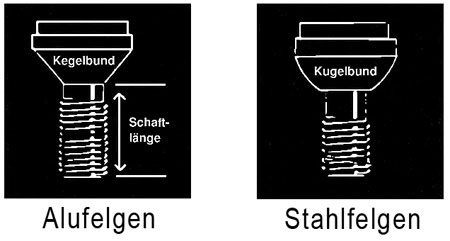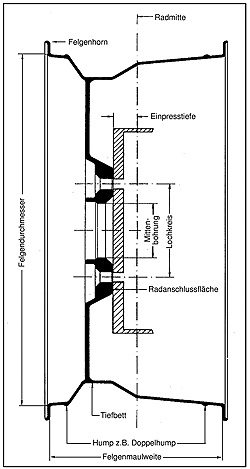Información sobre llantas
Llantas para dummies
Nuestra guía para principiantes pretende ayudarle a comprender el significado del término «offset» y permitirle calcular usted mismo las combinaciones de llantas y anchos de guardabarros.
En primer lugar, algunas explicaciones:
Superficie de montaje de la rueda = freno de tambor o freno de disco
Centro de la rueda = se determina colocando un metro de medida en la llanta (de pestaña a pestaña de la rueda) y luego se determina el centro (ver dibujo).
Offset = corresponde a la distancia entre el centro de la rueda y la superficie de montaje de la rueda.
Si la superficie de montaje de la rueda está perfectamente centrada, tiene un desplazamiento cero (Offset=0), mientras que si la superficie de montaje está delante (más hacia el lado de la calle) de la línea central de la rueda (por ejemplo, Offset 25), tiene un desplazamiento positivo de la rueda. Esto significa un estrechamiento del ancho de vía del vehículo de aproximadamente 2,5 cm por lado.
Mientras que si la superficie de montaje está detrás de la línea central de la rueda, se tiene un
Offset
negativo (por ejemplo,
Offset
-10) y esto significa un ensanchamiento del ancho de vía del vehículo de aproximadamente 1,0 cm por lado.
La anchura de la llanta se indica siempre en pulgadas (") (1 pulgada = 2,54 cm), es decir: una llanta de 7 pulgadas tiene una anchura de 7 x 2,54 cm = 17,78, es decir, unos 18 cm.
Veamos un ejemplo
Si se compara una llanta de 5,5 J x 15
Offset
+ 34 con otra de 7J x 15
Offset
+16, la distancia entre la superficie de montaje de la rueda y la pestaña exterior de la llanta se calcula de la siguiente manera:
5,5 J x 15
Offset
34 = (5,5 x 25,4*)/2 -(+34) = 36 (mm)
7 J x 15
Offset
16 = (7 x 25.4*)/2 - (+16) = 73 (mm)
* = 1 pulgada
Así, si una llanta 5,5 J X 15 Offset 34 cabe justo debajo de un guardabarros normal, se necesita una extensión de guardabarros de 73 mm - 36 mm = 37 mm (aprox. 4 cm) para la llanta 7J x 15 Offset +16.


